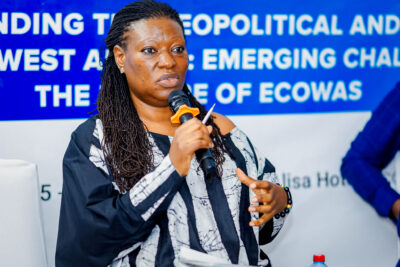It begins with coffee cups. The cover of Shahzad Bashir’s A New Vision for Islamic Pasts and Futures features Lara Baladi’s The Rose, a digital collage of photographs of coffee cups with dreg remains, printed on porcelain medallions and surrounded by curlicues and figurines. By writing about Baladi’s collage briefly in an essay devoted to Bashir’s book, I am probably falling prey to the academic tendency that Bashir warns us against: assuming that the visual image is secondary to the written word. I apologize for doing so. As edified as I have been by The Rose, I turn to the way Bashir appreciates it in A New Vision. He follows the coffee dregs as evidence of a past collective of drinkers, the photographs themselves embedded in a panel resembling a lace-like tablemat whose web connotes the intersections of the drinkers. In her artwork, Baladi represented the community that had sat with her ailing father through refashioning photographs of their coffee cups; for Bashir, this is a powerful allegory of pasts that are always recoverable only in fragments. Puzzling over materials that spoke of pasts and the failure of the past’s full recovery triggers the curiosity of historians. It is precisely this puzzling over Islamic evidence that led Bashir to create A New Vision.
I have merely discussed Bashir’s cover so far. A New Vision is a pioneering project that challenges traditional visions of Islamic linear history by embodying in its form the author’s intentions. The digital web form allows for multiple intersections and a constellation of Islamic data. The scope of the project is intentionally as broad as possible, walking audiences through premodern tarikh and Pakistani films, Fatima Mernissi’s “fictional autobiography” as much as Ibn ʻArabi’s postulations on saints. It guides us through observations, inscriptions, and narratives on mosques in Central Java and Central Iran as well as mementos from shrines in West Punjab, along with genealogies ranging from the Nation of Islam and Elijah Muhammad’s “theology of time” to Muslim pasts as understood by Rohingya refugees and those who persecute them.
I ended the previous sentence with a reference to Bashir’s final section on “Refugee Horizons” (before his epilogue), but the format of the book encourages us to read it in different ways to fully appreciate the web-like intersections of Islamic pasts. All the evidence A New Vision presents to readers forms, as Bashir proposes, a repository of time and Islam. Indeed, he emphasizes how he approaches Islam as “a matter of naming rather than determining substances” and emphasizes that “Islam is found wherever it is invoked by name or inference, without an expectation of systematicity or internal coherence.” Bashir’s approach to Islam’s nominality and the fusing of Islamic evidence from diverse temporalities may lead some to assume, mistakenly, that the project is ahistorical or relativistic, but Bashir is undeniably meticulous in contextualizing Islamic historical evidence.
Bashir remains deeply concerned about appreciating the fully Islamic nature of evidence wherever and whenever Islam has been invoked or inferred. This is a call for comprehensively acknowledging Islam and for being cautious of how the hierarchies of time periods and regions, as well as class, race, and gender, may encourage us to cast aspersions on the Islamic authenticity of certain communities, materials, rituals, genres, and concepts. Bashir seems driven by ethical concerns in this regard. At moments, A New Vision reveals how perturbed he is by how scholars who profess postorientalist and decolonial positions yet remain “analytically thoroughly orientalist” by pursuing approaches “confining Islam to regions, time periods, and topics in an a priori way” and by failing to acknowledge the “inadequacy of timelines.”
Islamic time can, and has been, imagined as streaming from the sixth- or seventh-century Arabian Peninsula to the present. Such an approach could imply that Islamic expressions were less authentic when they were distant from this core time and space, but Bashir has little regard for such hierarchies. In presenting a “maximally diversified repository of evidence” alongside Bashir’s ruminations on pasts always being recoverable in fragments, A New Vision encourages us to reconsider assumptions, including why we accept that a premodern writer’s account of the Prophet Muhammad was more authentic and authoritative than one written by a much later historian who was similarly invested in representing and reconstructing an earlier Islamic time, or why we deem Southeast Asian narratives of Islamic history and physical alignments of the Islamic east and west apocryphal or fictional.
While presenting Islamic evidence and references in an accessible form, Bashir repeatedly reminds his audience of the need to appreciate “multiple temporalities,” to “break from linear representation,” and to “think of Islamic history as an entangled, three-dimensional web that accommodates the vast differences regarding the construction of time we can find in Islamic phenomena and discourses.” One example of how he refuses to think of Islamic history as a simplistic timeline can be found in the section entitled “The Web of History,” which introduces Kudus or the Jerusalem—al-Quds—of Central Java, in the following words:
In the usual view of Islamic history presented as a timeline, Kudus would be treated as derivative, a latter-day Javanese Jerusalem exhibiting Muslims’ investment in the holiness of a city in the Middle East. In the view of history I wish to promote, Kudus is the primary object and Jerusalem the imagined space that clarifies its meaning. Seen from the eyes of those who are invested in the space and time of Kudus, Jerusalem in the Levant is a background construct, to which time flows from a present to a past.
Of course, this is not only a question about Javanese Islam. Bashir joins other scholars of Islam who are uncomfortable with prevalent hierarchies in Islamic studies, calling for a new vision of a “nonexclusivist and perpetually contested and transformable” Islamic history. As a historian who has also worked on the narratives of elite Muslim men that dominate scholarship and perpetuate tradition, itself a concept Bashir rejects for its implications of boundedness based on texts, rituals, and discursive or aesthetic patterns, he seems ethically driven in this project to correct conventions of history writing.
The web of A New Vision stares us in our faces. It calls for us to begin Islamic histories with the narratives of medieval Egyptian texts as much as the lives of early nineteenth-century West African men (Rufino José Maria “Abuncare” and Omar Ibn Said) who were enslaved and involuntarily transported to the Americas. Such a majestic project might leave audiences hungry for more women’s voices, beyond Mernissi and Amrita Pritam, even as Bashir reminds us that women are silenced in genealogies that memorialize the Prophet’s patrilineal bloodlines. Bashir remains sensitive to “the pain of the victimized bodies,” whether it among Muslims looking to Islam as a salvation from oppression, Muslims suffering or participating in the trade of enslaved persons, refugees from communities ethnically cleansed due to associations with Islam, or individuals depicted in medieval Muslim court miniatures. For instance, he pays close attention to the “postures, expressions, and blood” of both Muslims and non-Muslims in the paintings within Sharaf ad-Din Yazdi’s panegyric record of Timur’s victories, Zafarnama, because he aspires to envision different pasts and futures than those that are customarily celebrated.
Let’s return to Bashir’s quote on Kudus (above) to appreciate the extraordinary web format of A New Vision and the breadth it facilitates. The reference to a different time and space (Jerusalem) in Java creates an entanglement of times and spaces, and the web of A New Vision represents such entanglements through a palette of Islamic evidence, encouraging audiences to study any chapter/evidence without losing sight (literally) of its narrative structure within a larger web. This web, as far as I understand, represents the disparate but still intersecting temporalities of Islam. The web allows Bashir and us to move beyond assumptions of Islam’s coherence or “internal logic” and beyond academic imaginings of Islam as a tradition, towards an appreciation of “particularized connections across vast amounts” of Islamic data. While A New Vision is concerned about what has been represented as Islamic tradition and history, Bashir’s arguments have unavoidably clear implications for religious studies and history overall.
I conclude with Bashir’s description of his own vision of Islam as “quite different from treating Islam as a metaphysical system aimed at existential questions.” He instead takes a “nonconfessional approach,” valuing how Muslims and non-Muslims have represented and “create[d] Islam.” He introduces us to a range of non-Muslim imaginations of Islam, such as Udayaraja’s Rajavinod Mahakavyam, which praises the Gujarat Sultan Mahmud Begada (1458-1511), Pritam’s (1919-2005) invocation, in her poem Aj Akhan Waris Shah Nu (Today I say to Waris Shah), of an eighteenth-century Chishti poet amidst the brutalities of the Partition, and the Islamophobic and anti-Rohingya positions of the Burmese Buddhist monk Ashin Wirathu (b. 1968). In doing so, Bashir reminds scholars who work on Islamic pasts and presents of the need for Islamic studies to be fully diversified, while highlighting how theological positions and confessional biases inherited from earlier scholarship on Islam continue to inform academic approaches.
Bashir identifies as an academic historian and demarcates his approach and methods from those of theologians. Still, many theologians today would make similar arguments, both in accounting for how Muslims and non-Muslims or Christians and non-Christians have shaped or created Islam and Christianity an in calling for dialogues with historians to bridge academic divisions and dispense with notions of practitioners as abstract, dogmatic, and stripped of the dynamism and multiple temporalities that A New Vision emphasizes.
Perhaps due to his humility, Bashir understates his own role in shaping Islam through his web and through all the materials and evidence he majestically introduces to us. Bashir’s recovery of fragments of the Islamic past, his reworking of Islamic evidence, and the representation of an Islamic universe through his web and digital book all present Islam to his audiences and encourage them to reimagine. As he unequivocally states: I invite you to imagine Islam anew.












